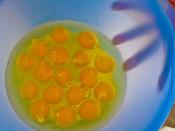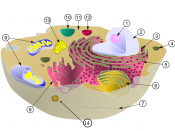Chapter 7: A View Of The Cell
Ch. 7.1 The Discovery of Cells
The History of the Cell Theory-
Before microscopes disease thought to come from supernatural means
Cells- the basic unit of living organisms
Development of light microscopes-
Simple microscopes vs. compound
Compound light microscopes- a series of lenses to magnify objects in steps, magnify up to 1,500 times
The Cell Theory-
Anton Van Leeuwenhoek- first person to record looking at water under a microscope.
Robert Hooke- viewed cork, gave us the name "cells"
Matthias Schleiden- concluded that all plants are composed of cells
Theodore Schwann- concluded that all animals are composed of cells
1. All organisms are composed of one or more cells
2. The cell is the basic unit of organization of organisms
3. All cells come from preexisting cells
Development of electron microscopes
Electron microscopes- uses a beam of electrons instead of light to magnify structures up to 500,000times
1. Scanning Electron Microscope (SEM)- scans the surface to show 3D surface images
2. Transmission Electron Microscope (TEM)- allows us to see inside cells
3. Scanning Tunneling Microscope (STM)- investigates atoms on the surface of a molecule
4. Staining, other techniques for contrast
Two Basic Cell Types-
- Prokaryotes- organisms made of cells that lack membrane bound organelles
- Eukaryotes- organisms made of cells with membrane bound organelles, multicellular plants & animals
- Organelles- membrane bound structures with in a eukaryotic cell
* Membrane separates chemical reactions
* Robert Brown- observed nucleus
* Rudolf Virchow- determined nucleus is structure responsible for cell division
* Nucleus- central membrane-bound organelle that manages cellular functions
Ch. 7.2 The Plasma Membrane
Provides a barrier between the internal components of a cell and its external environment.
Maintaining a Balance-
Survival depends on the cell's ability to maintain the proper conditions within itself.


